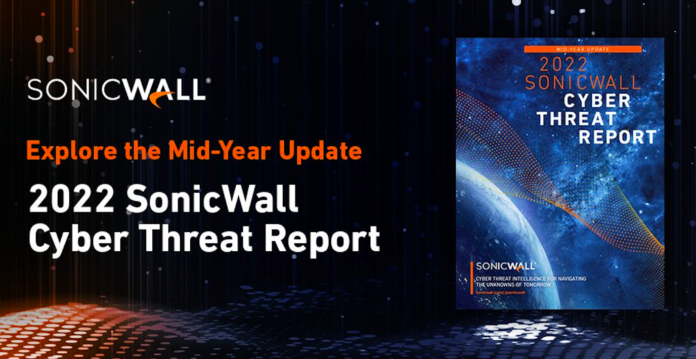More than 4 billion malware attempts were recorded globally in the first nine months of 2022 when ransomware attempts have already exceeded full-year totals from four of the last five years, according to SonicWall.
The 2022 SonicWall Cyber Threat Mindset Survey found that 91% of organisations are most concerned about ransomware attacks, indicating a rise of anxiety among security professionals.
“With expanding attack surfaces, growing numbers of threats and the current geo-political landscape, it should be no surprise that even the most seasoned IT professional can feel overwhelmed,” said SonicWall President and CEO Bob VanKirk.
After a record-breaking 2021, overall ransomware attacks have trended down in the first three quarters of 2022 — especially in the United States (-51%).
However, attack locations have continued to shift, as ransomware attempts jumped in the U.K. (20%), EMEA (38%) and APJ (56%) compared to the same time frame last year.
In the Asia-Pacific region, there is an accelerated reconfiguring of the international cyber frontlines – more specifically across the malware, intrusion and ransomeware attacks with a gradual year-on-year increase of 38%, 6% and 56% respectively.
It is easier than ever to perform ransomware attacks. With Ransomware-as-a-Service (RaaS) offerings, even less technical cybercriminals can purchase ransomware kits on the dark web and target organisations with minimal experience.
Ransomware actors also are diversifying their business models and broadening their networks as demand for their services continues to grow, leading to an explosion in the variety of different tools and resources being offered via illicit marketplaces.
According to SonicWall survey data, organisations are concerned with how easily ransomware attacks can be launched and 89% cited concern of financially motivated threats.
Hackers are increasingly targeting financial firms, such as banks and trading houses, with cyberattacks designed to maliciously use computer systems to illegally mine cryptocurrencies.
Cryptojacking numbers jumped 35% globally through three quarters, including a 377% spike in EMEA and 160% increase in APJ.
With more smart devices entering the digital space every day there is a growing need for Internet of things (IoT) security.
IoT devices have multiple ways to connect to a network, offering multiple attack vectors to exploit. IoT malware climbed 92% globally, with 82% and 200% jumps in APJ and North America, respectively.
















